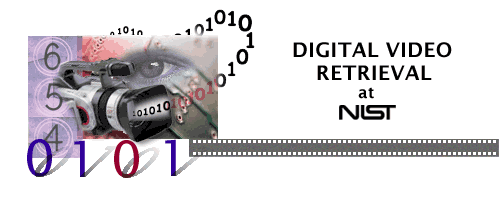Restrictions on use of development and test data in the Ad-hoc Video Search (AVS)
Each participating group is responsible for adhering to the letter and spirit of these rules, the intent of which is to make the TRECVID evaluation realistic, fair, and maximally informative about system effectiveness as opposed to other confounding effects on performance. Submissions, which in the judgment of the coordinators and NIST do not comply, will not be accepted.
Test data
The test data cannot be used for system development and system developers should have no knowledge of it until after they have submitted their results for evaluation to NIST. Depending on the size of the team and tasks undertaken, this may mean isolating certain team members from certain information or operations, freezing system development early, etc.
Participants may use donated features output from the test collection but incorporation of such features should be automatic so that system development is not affected by knowledge of the extracted features. Anyone doing searches must be isolated from knowledge of that output.
Development data
The development data is intended for the participants' use in developing their systems. It is up to the participants how the development data is used, e.g., divided into training and validation data, etc.
Participants may use other development resources not excluded in these
guidelines.
Such resources must be reported at the workshop. Note that
use of other resources will change the submission's status with
respect to system development type, which is described next.
- If the run is using the "no annotation" sort then choose from
the following 2 training types:
- E - used only training data collected automatically using only the official query textual description.
- F - used only training data collected automatically using a query
built manually from the given official query textual description.
As the name "no annotation" indicates, for the categories E and F, no manual annotation should be done on the automatically collected data; automatic processing is allowed and encouraged but data should be processed blindly.
- Otherwise choose from the following 2 training types:
- A - used only V3C1 data (test data of AVS from 2019-2021 and associated annotations)
- D - used any other training data with any annotation (except V3C2/testing data)
All data used for training at any level of any system component should be considered. This means that even just the use of something like a face detector that was trained on non-V3C1 training data would disqualify the run as type "A".
The training categories will be used only as an information for clarifying what is done by the participants. They will not be used for presenting the results in different tables and figures; there will be only one global ranking and one global plot in which all systems will be gathered, they will be just tagged (as previously) by the category as part of the run named generated at NIST.
We encourage teams to submit at least one pair of runs from their allowable total that helps the community understand how well systems trained on V3C1 data generalize to V3C2 test data.


News magazine, science news, news reports, documentaries, educational programming, and archival video

TV Episodes

Airport Security Cameras & Activity Detection

Video collections from News, Sound & Vision, Internet Archive,
Social Media, BBC Eastenders